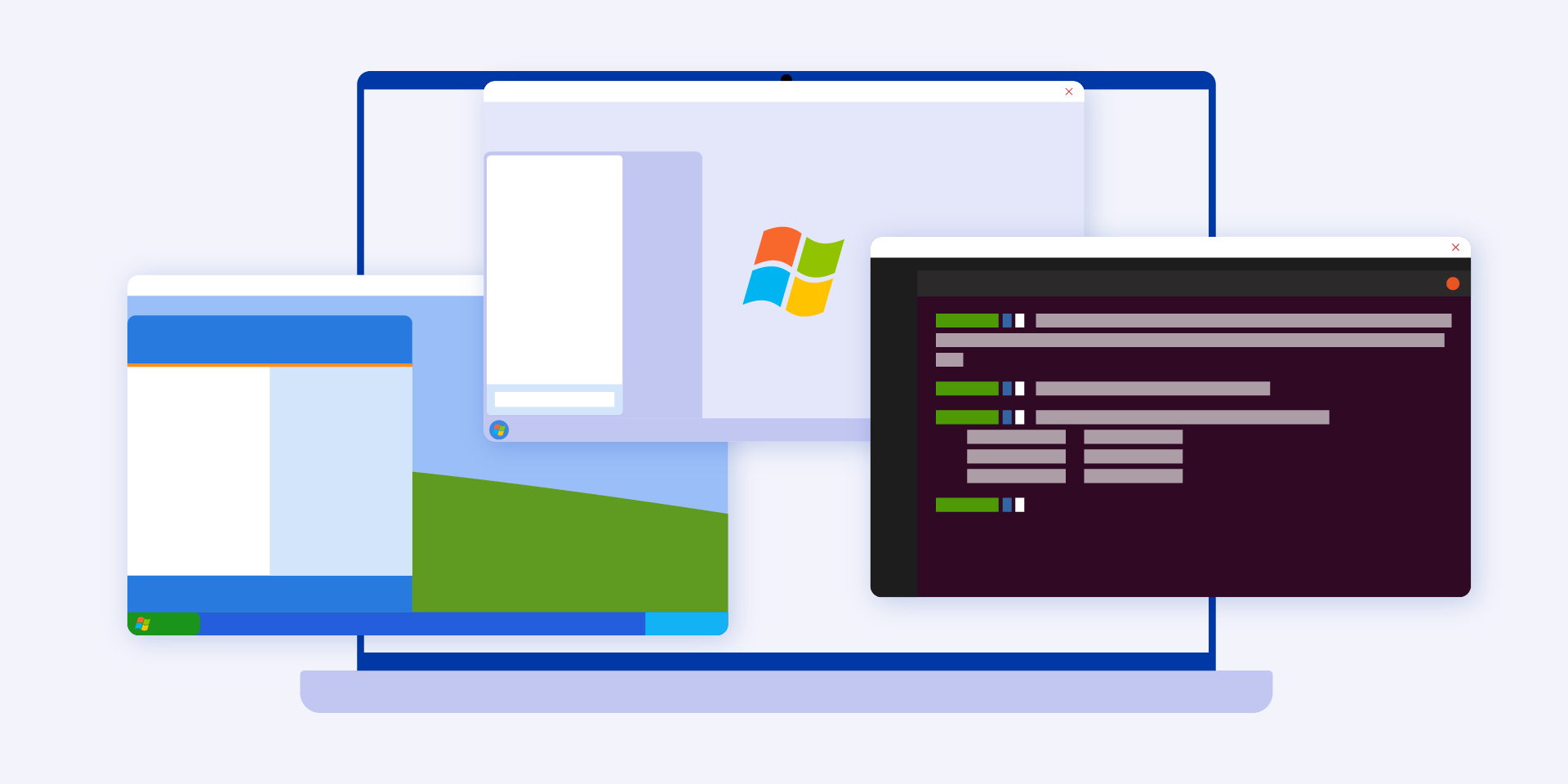
Over the last 15 years, virtual machines have been gaining strength, due to organizations which have opted for server virtualization to use the computing power of their physical servers much more efficiently. This way, it is possible to save space in the data center and reduce the need for physical servers.
In general aspects, a virtual machine is a software able to load another operating system inside it, pretending to be a real PC. As the term says, it is not a physical and tangible machine, but one that we can only see virtually or emulated.
Although it is true that there exist several types, the most commonly used virtual machine is the “system” virtual machine. This type of virtual machine emulates a complete computer: it has its storage disk, graphics card, RAM memory and the rest of the hardware components of a PC, but in this case virtually. All this emulation is invisible to the operating system running the virtual machine, but all components work just as a computer will do.
Even if virtual machines are physically working inside another computer, they cannot access to the host machine. However, there are applications that allow and facilitate the transfer of files and data from the host to the virtual machine.
Main Characteristics of a Virtual Machine
After defining virtual machine concept and having exposed some of its functionalities, it is essential to know its principal characteristics:
- Almost every operating system can be installed in the majority of virtual machines, such as Windows, Linux, Android or Mac OS X. Notwithstanding, there exist others allowing only one operating system to be displayed.
- Each operating system that is being virtualized is completely independent from the rest of the operating systems. Therefore, if a virtual machine suffers any problem or stops working directly, others will not be affected and will continue their course and functioning.
- Operating systems’ mode of use from a virtual machine is identical to that of an operating system installed on any computer.
- Elements composing a virtual machine are the same as those available in a physical computer. From the RAM and hard disk, to the CD-ROM drive, video card and network card, are included in a virtual machine, the virtualization of all these elements being the only difference with respect to a real computer.
- All of the elements in a virtual machine are included in a set of files. In this way, a copy of a virtual operating system is made possible from a computer to another, as well as the generation of backup copies. Both processes are carried out quickly and easily; technical problems are avoided too.
Advantages of Virtual Machines
Virtualization and virtual machines offer a range of advantages to be considered:
- No hardware investment required: unlike a physical machine, the setup of virtual machines does not require physical components, therefore prevents organizations from spending money on the maintenance and renewal of these devices.
- Provides greater accessibility: being available in the cloud, it can be accessed from anywhere if an internet connection is available.
- Possibility of pay-per-use included: in general terms, virtual machines can be purchased on a pay-per-use basis. This would save costs by not having to invest in equipment that may not be used on a regular basis.
- Provides elasticity, flexibility and scalability: a virtual machine allows to increase or decrease the power of an infrastructure quickly and easily according to the user’s needs. For instance, it may happen that the disk storage capacity becomes overloaded, that the user needs a more powerful machine in case of a high workload, or that the server becomes too small. On these occasions, a virtual machine is the preferred option.
- Greater security provided: fast programming of backups facilitates the backup of virtual machines.
DocPath’s document solutions software is designed to take advantage of the benefits of virtual machines in the cloud. Some examples are DocGeneration Engine (DGE), and Sprint, a scalable document software solution for CCM (Customer Communications Management).
Do you want to know more?
About DocPath
DocPath is a leading enterprise document software company that offers its international customers the technology that allows them to complement their ERP and implement advanced Document Output Management, Customer Communications Management and document software spooling processes.
Founded in 1993, DocPath is based in Europe, USA and Latin America and is present with its Solutions in companies around the world. Among its customers there are prestigious banks and top-tier corporations, facilitating the difficult and complex task of designing, generating and distributing their business-critical documents. DocPath keeps a strong commitment to R+D+i, an area to which it allocates a large part of its revenues, and in which lies one of the keys to its success.
For more information, visit: www.docpath.com.
Legal Notice: DocPath is a registered trademark of DocPath Document Solutions. All rights reserved. Other trademarks mentioned herein might be the property of their respective owners.
